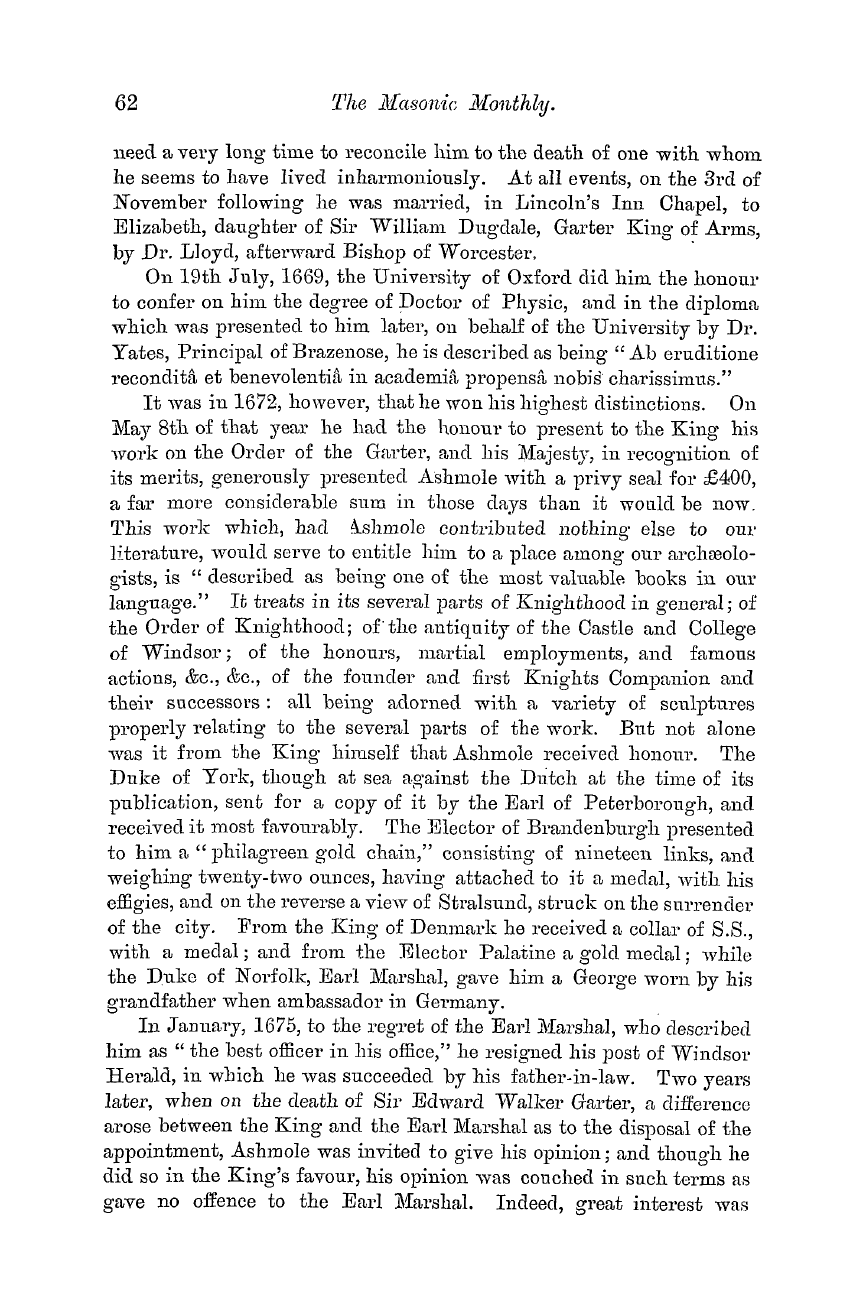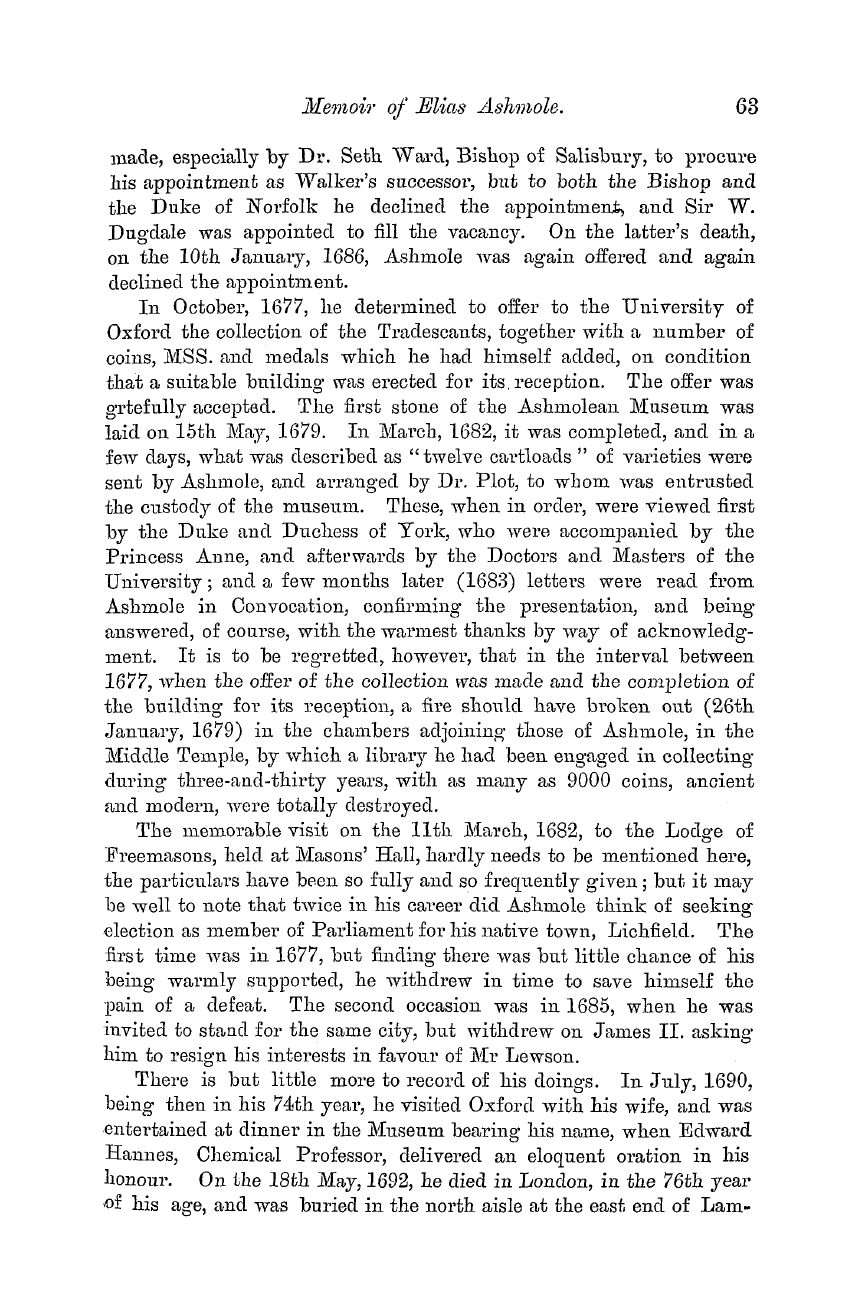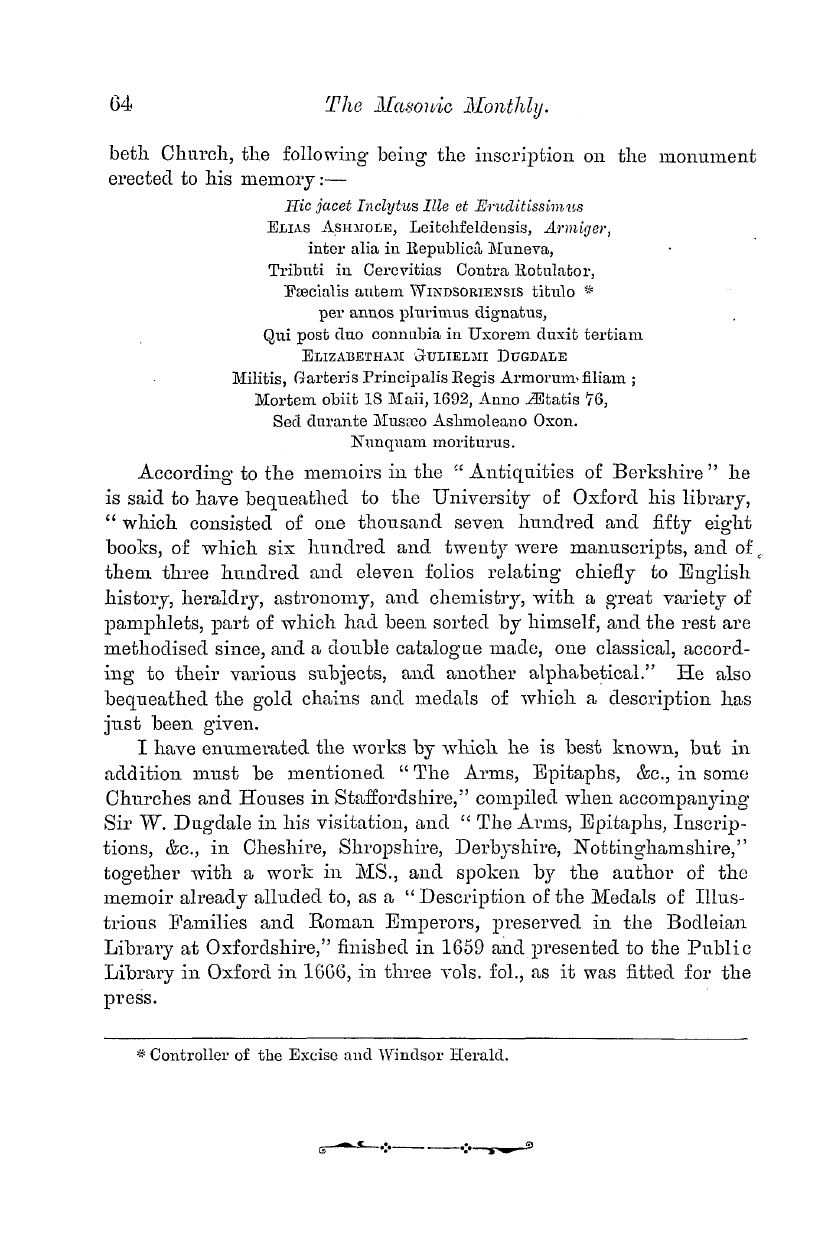Note: This text has been automatically extracted via Optical Character Recognition (OCR) software.
The Worshipful Craft Of Stonehewers In Germany.
2 . No felloAV shall leave the Lodge without permission , nor neglect his Avork , nor keep Blue Monday . * And the fellows shall not run together in the Lodge [ i . e ., workshop ] to chatter , but attend to their work . 3 . The felloAVS shall not combine together and simultaneously
leave an employment so as to delay a building , unless a master acts contrary to the ordinances ; in such a case the felloAVS may well leave him in idleness . 4 . No fellow shall discharge himself at any' other than the accustomed time , and the master on his part shall only discharge them
on a pay evening [ Saturday . ] 5 . No felloAV shall travel and take leave before previously paying his debts . 6 . No fellow shall teach another aught for money , but each shall teach the other and instruct him , one piece against another .
7 . An apprentice who has served his time shall , on his being ' declared free , promise by giving his hand in lieu of oath , to communicate the Stonemason ' s greeting and grip to no one excepting to those to whom it may be necessary for him to prove himself ; he shall also promise to be obedient unto the Craft , and not to weaken it , but to
strengthen it with all his power , and therefore to serve with no one who has not learned it in a regular and legitimate manner ; and lastly , that he will not arbitrarily alter his mark . 8 . No fellow shall be made a warden if he has not travelled for at least one year .
Thereupon the candidate receives the grip and the words of the greeting , and is allotted a mark . f He is alloAved to choose the form of the last , and is required to draw it upon a Avooden platter , which the other fellows examine in turn in order to judge whether the mark differs from those previously
allotted . If this mark is approved of it is . entered into the fellowbook , and he must henceforth engrave it on his stones ; he also uses it as a monogram in his seal . The master carries it on a shield . An old regulation in its formation is that the square used to prove the stones shall ahvays form part of it . Stonemason ' s marks are to be seen on buildings as early as the eleventh century . J
Note: This text has been automatically extracted via Optical Character Recognition (OCR) software.
The Worshipful Craft Of Stonehewers In Germany.
2 . No felloAV shall leave the Lodge without permission , nor neglect his Avork , nor keep Blue Monday . * And the fellows shall not run together in the Lodge [ i . e ., workshop ] to chatter , but attend to their work . 3 . The felloAVS shall not combine together and simultaneously
leave an employment so as to delay a building , unless a master acts contrary to the ordinances ; in such a case the felloAVS may well leave him in idleness . 4 . No fellow shall discharge himself at any' other than the accustomed time , and the master on his part shall only discharge them
on a pay evening [ Saturday . ] 5 . No felloAV shall travel and take leave before previously paying his debts . 6 . No fellow shall teach another aught for money , but each shall teach the other and instruct him , one piece against another .
7 . An apprentice who has served his time shall , on his being ' declared free , promise by giving his hand in lieu of oath , to communicate the Stonemason ' s greeting and grip to no one excepting to those to whom it may be necessary for him to prove himself ; he shall also promise to be obedient unto the Craft , and not to weaken it , but to
strengthen it with all his power , and therefore to serve with no one who has not learned it in a regular and legitimate manner ; and lastly , that he will not arbitrarily alter his mark . 8 . No fellow shall be made a warden if he has not travelled for at least one year .
Thereupon the candidate receives the grip and the words of the greeting , and is allotted a mark . f He is alloAved to choose the form of the last , and is required to draw it upon a Avooden platter , which the other fellows examine in turn in order to judge whether the mark differs from those previously
allotted . If this mark is approved of it is . entered into the fellowbook , and he must henceforth engrave it on his stones ; he also uses it as a monogram in his seal . The master carries it on a shield . An old regulation in its formation is that the square used to prove the stones shall ahvays form part of it . Stonemason ' s marks are to be seen on buildings as early as the eleventh century . J

































































